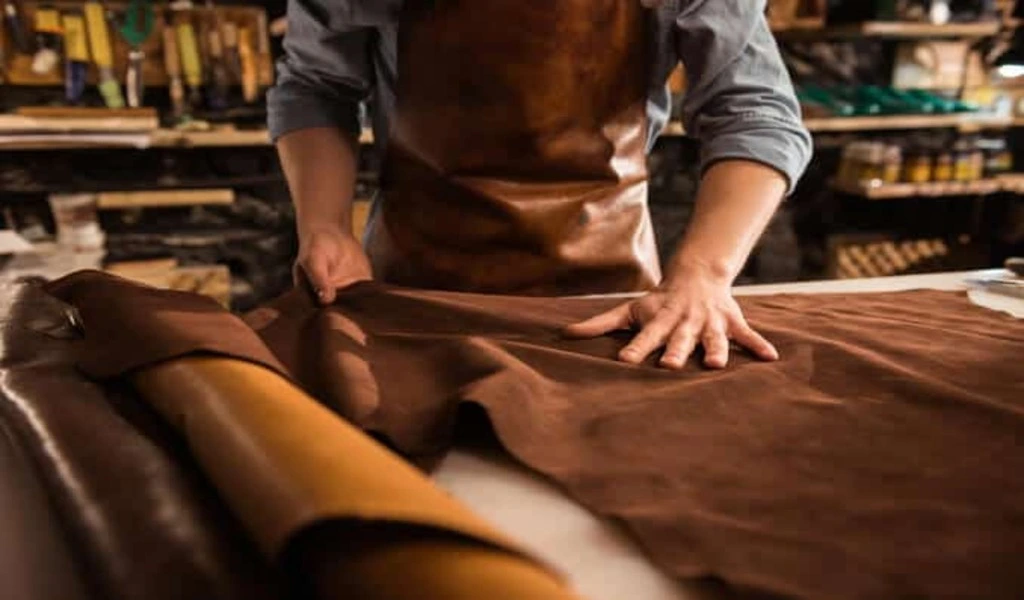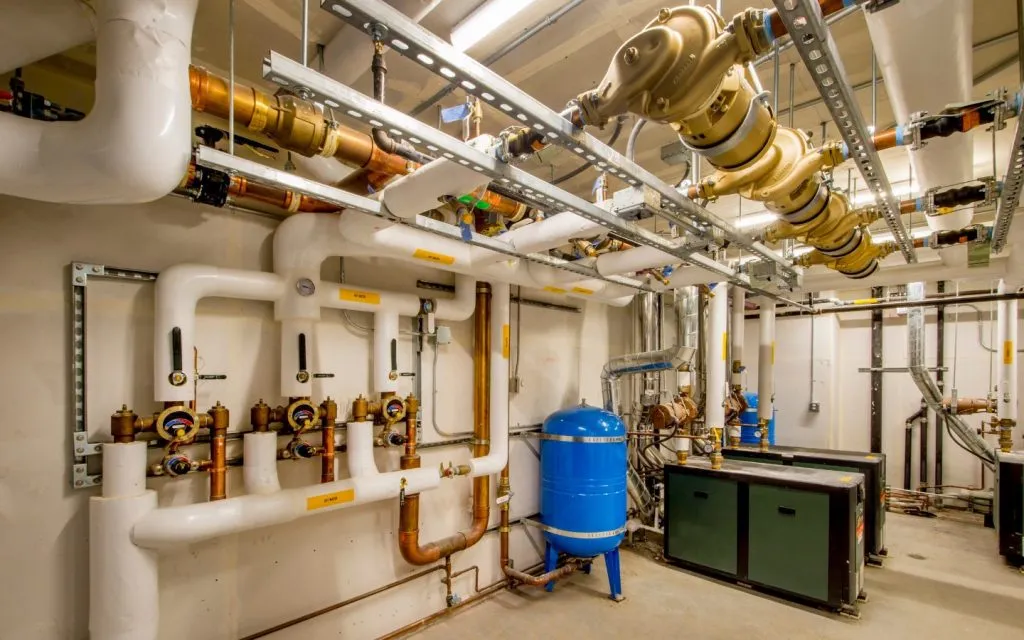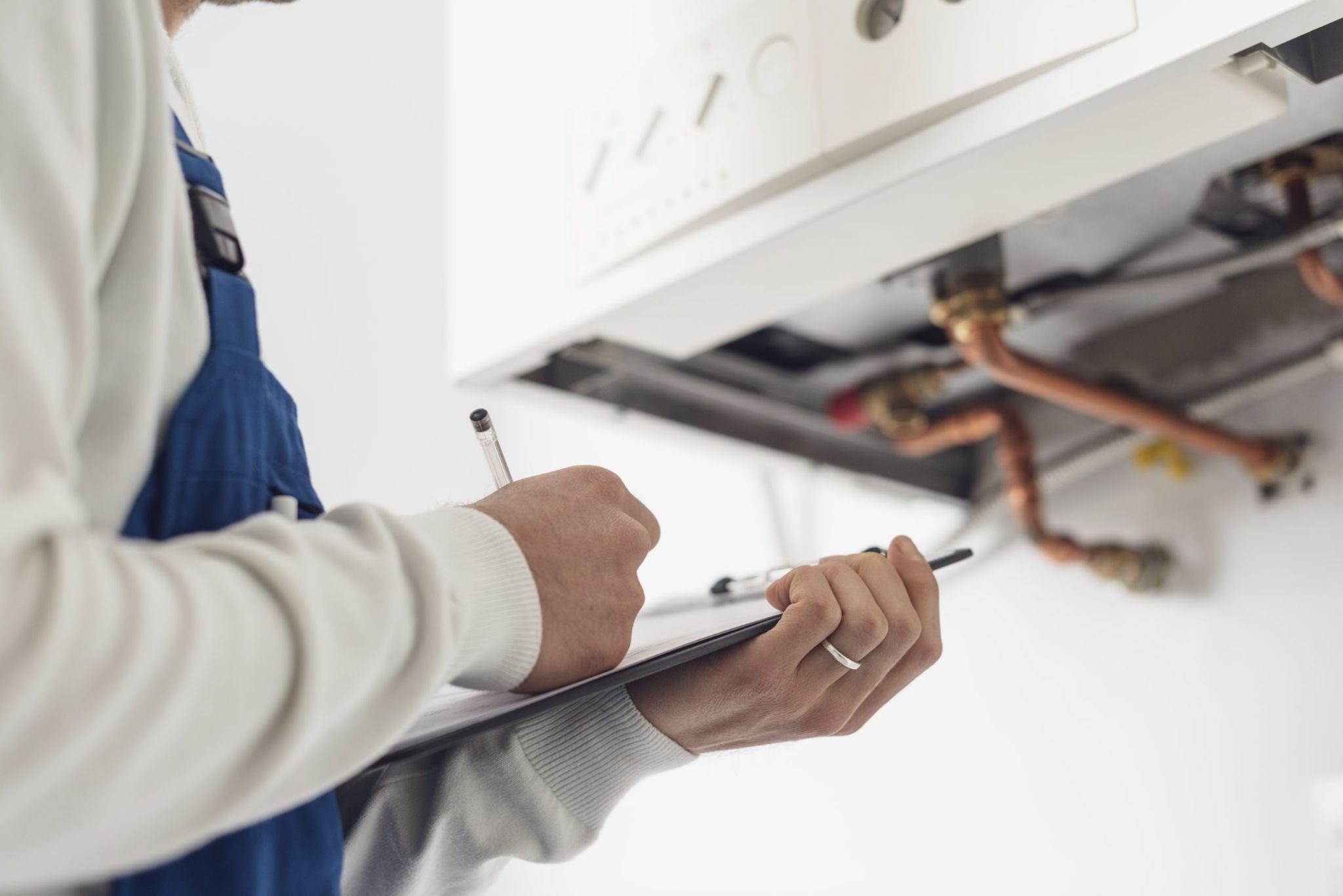Learning
Beyond Tradition: Innovations Revolutionizing the Leather Industry

There has long been a rich tradition of craftsmanship, design, and fashion in the leather industry. From ancient civilizations to modern times, leather has been revered for its durability, versatility, and inherent elegance.
However, as technology and sustainability take center stage in various sectors, the leather industry is undergoing a remarkable transformation through innovative practices that are reshaping its future.
The pursuit of innovation within the leather industry isn’t just about keeping up with the times; it’s about embracing the evolving needs of consumers, the environment, and the industry itself.
With a deep respect for tradition and an eagerness to adapt, the leather industry is ushering in a new era marked by cutting-edge advancements that are redefining the way leather is produced, used, and perceived.
10 Innovations Revolutionizing the Leather Industry
The leather industry, steeped in tradition and known for its timeless elegance, is undergoing a remarkable transformation. Innovations at the intersection of technology, sustainability, and craftsmanship are redefining the way we perceive, create, and utilize leather products and leather supplies. Here are 10 groundbreaking innovations reshaping the leather industry:
Lab-Grown Leather
The emergence of lab-grown leather signifies a revolutionary shift in the way we approach leather production. This breakthrough presents a sustainable and ethical alternative that holds the potential to reshape the industry.
Unlike traditional animal-derived leather, lab-grown leather sidesteps the ethical dilemmas associated with animal farming and slaughter. In addition to addressing ethical concerns, this innovation offers consistency and quality that were previously difficult to achieve through conventional processes.
Moreover, as lab-grown leather significantly reduces the environmental footprint associated with raising livestock, it aligns with the growing global movement toward more responsible and eco-conscious manufacturing practices.
Nanotechnology Marvels
Nanotechnology has ushered in a new era of leather innovation, fusing science with aesthetics. With nanotechnology, the remarkable properties of leather can be taken advantage of, in order to elevate its performance and visual appeal.
Nanostructures, meticulously engineered, penetrate the very fabric of leather, resulting in a surface that exhibits heightened water resistance, a boon for durability, and an intensified color vibrancy that captures the eye.
These minuscule alterations on the molecular level pave the way for leather products that can withstand the challenges of modern life while giving off an enhanced allure. The marriage of nanotechnology and leather is not only revolutionizing product quality but also redefining our understanding of what leather can achieve in the realms of function and form.
Sustainable Alternatives
The pursuit of environmental responsibility has spurred a wave of creativity in the leather industry, resulting in the emergence of innovative and sustainable alternatives to traditional leather. These eco-conscious materials, such as mushroom leather, apple leather, and pineapple leather, represent a departure from convention, offering cruelty-free and biodegradable options.
Mushroom leather, cultivated from mycelium, transforms agricultural waste into a sturdy and versatile textile. Apple leather repurposes discarded apple peels and cores into a supple material, while pineapple leather utilizes the fibers of pineapple leaves to craft a renewable resource. Collectively, these sustainable alternatives reflect a transformative shift towards a more compassionate and planet-friendly approach to leather production.
Smart Leather Products
Leather products are getting smarter. Integration of technology, such as embedded sensors and electronics, is transforming leather goods into functional tools. Smart wallets, bags, and wearables are bridging the gap between fashion and technology.
These products not only serve as style statements but also as intelligent tools, allowing users to seamlessly interact with their environment through touch-sensitive interfaces, activity trackers, and even connectivity to smart devices. Through this convergence, leather’s timeless elegance finds itself intertwined with the capabilities of the digital age, forging a path toward innovation that marries craftsmanship with the latest advancements.
Digital Design and Customization
Digital tools are revolutionizing the design process. The advent of 3D modeling and virtual reality has unlocked a realm of possibilities, enabling designers to embark on a journey of creativity that was once confined to the physical world.
This not only streamlines the creative process but also plays a pivotal role in reducing material waste, as designers can fine-tune their designs virtually, resulting in fewer prototypes and more refined end products. As a result, digital innovation not only enhances design efficiency but also paves the way for a more sustainable and mindful approach to leather creation.
Circular Economy Initiatives
Embracing a profound shift in perspective, the leather industry is increasingly embracing the principles of the circular economy. This transformative concept involves a departure from the linear “take, make, dispose” approach to a circular loop that values sustainability and longevity.
Leading brands are at the forefront of this movement, adopting practices such as upcycling, where discarded materials are ingeniously repurposed into new leather products. Recycling is also playing a pivotal role, as old leather goods are transformed into new, breathing life into what was once deemed waste.
Additionally, responsible sourcing practices ensure that the materials used align with ethical and environmental standards, promoting a holistic approach that minimizes the industry’s footprint. As the circular economy gains momentum within the leather sector, it not only reduces waste but also sparks a paradigm shift, transforming leather products into vessels of conscious consumption.
Biotechnology Advancements
Biotechnology is proving to be a transformative force in the evolution of leather production, extending its influence well beyond the realm of lab-grown leather. Enzymatic tanning processes have emerged as an innovative approach that not only reduces the reliance on harsh chemicals traditionally used in tanning but also offers a more controlled and efficient process. The natural enzymes used in this method facilitate tanning, thus reducing waste and environmental impact.
Fabrication techniques are also being enhanced through biotechnology, creating opportunities to craft leather with reduced chemical inputs and water consumption. As a result, these advancements align leather production with sustainable practices, preserving the planet’s resources and promoting a more responsible approach to the art of leathermaking.
Custom Fit and Functionality
In the dynamic landscape of leather crafting, innovation has unlocked a new dimension of personalization, offering custom fits and functionalities that cater to individual needs in unprecedented ways. This shift is epitomized by self-adjusting leather shoes that harness cutting-edge technology to conform to the wearer’s unique foot shape, enhancing comfort and support.
Moreover, the industry is embracing tailored ergonomic designs that prioritize the biomechanics of the human body, resulting in leather products that not only exude style but also promote well-being.
These advancements reflect a departure from mass production and mark a transformation towards a consumer-centric approach that places individual preferences and requirements at the forefront of leather design. As a result, the intersection of innovation and craftsmanship is now yielding leather creations that blend unparalleled comfort with timeless elegance.
Eco-Friendly Tanning Techniques
Tanning, a critical process in leather production, is witnessing eco-friendly advancements. Vegetable tanning and chrome-free tanning methods are reducing environmental impact while maintaining product quality.
Augmented Reality Shopping
Augmented reality is changing the way consumers shop for leather products. Virtual try-on and interactive shopping experiences are helping buyers visualize products and make informed choices, enhancing the online shopping journey.
Embrace Innovation While Honoring Tradition
As the leather industry embraces these innovations, it’s evident that tradition and progress can coexist harmoniously. From cruelty-free alternatives to cutting-edge technology, these advancements are reshaping not only the products but the industry’s ethos as a whole.
This evolution embodies a holistic vision: a fusion of ethics, creativity, and sustainability. Innovation has the leather industry’s tapestry being rewoven with threads of progress, creating a canvas that pays homage to the past while crafting a narrative for the future—a future where leather continues to adorn lives, evolve, and captivate through innovation’s eternal embrace.
SEE ALSO: 5 Website Maintenance Hacks To Ensure Uninterrupted Online Success

Learning
First-Time Buyer’s Guide to the UK Property Market

Entering the UK property market as a first-time buyer can feel both exciting and daunting. The process is filled with potential pitfalls and complex decisions, but with the right guidance, it can be navigated smoothly. The estate agents in Yorkshire demystify the journey from the initial decision to buy a home to the moment you step over the threshold of your new property.
Understanding Your Financial Position
The first and perhaps most crucial step in the home-buying process is understanding your financial situation. This includes assessing your savings, income, and current debts. Here’s how you can prepare:
1. Deposit: Generally, you’ll need at least 5% of the property price as a deposit, though aiming for 10% or more can provide better mortgage rates.
2. Income and Expenses: Use a budget planner to assess your monthly income against your expenses. This will help you understand how much you can afford in monthly mortgage repayments.
3. Credit Score: Lenders will evaluate your credit score to determine your mortgage eligibility. So it’s important to have a good credit score, and you should work on it if required.
4. Mortgage Options: Speak to a mortgage advisor to understand different types of mortgages, such as fixed-rate, variable-rate, and help-to-buy schemes.
Getting a Mortgage Agreement in Principle
A Mortgage Agreement in Principle (AIP) is a statement from a lender indicating how much they’ll likely lend you. You will be a more attractive buyer with an AIP as it shows sellers you’re serious and financially prepared.
Deciding What You Want
Before you start viewing properties, it’s essential to know what you’re looking for. Consider the following factors:
1. Location: Proximity to work, schools, public transport, and amenities are key. Research neighbourhoods to find the best fit for your lifestyle.
2. Property Type: Decide whether you want a flat, terraced house, semi-detached, or detached property. Each has its pros and cons.
3. Must-Haves: Make a list of non-negotiables, such as the number of bedrooms, garden size, and parking facilities.
4. Future Proofing: Consider your future needs. Are you planning to start a family? Do you need space for a home office?
Starting the Property Search
With a clear idea of what you’re looking for, you can begin your property search. Here are some tips:
1. Use Online Portals: Websites like Rightmove, Zoopla, and OnTheMarket are excellent starting points. Set up alerts to get notified of new listings that meet your criteria.
2. Visit Estate Agents: Register with local estate agents who can provide insights into the market and inform you of new properties before they’re listed online.
3. Attend Viewings: Don’t rush this part. Visit several properties to get a feel for what’s available in your price range.
Making an Offer
Once you find a property you love, it’s time to make an offer. Here’s how to approach it:
1. Research: Check the selling prices of similar properties in the area to gauge a fair offer.
2. Negotiate: Don’t be afraid to negotiate. The starting point is most usually the asking price.
3. Conditions: You might include conditions in your offer, such as the inclusion of certain fixtures or a specific moving date.
The Legal Process
If your offer is accepted, the legal process begins. You’ll need a solicitor or licensed conveyancer to handle the legalities. Here’s what to expect:
1. Conveyancing: This is the legal transfer of property ownership. Your solicitor will handle this, including conducting searches, dealing with the Land Registry, and transferring the funds.
2. Surveys and Inspections: Arrange for a property survey to check for structural issues. There are different types of surveys, from basic condition reports to full structural surveys.
3. Mortgage Finalisation: Once the survey is complete and satisfactory, your mortgage can be finalised.
4. Exchange of Contracts: This is when the sale becomes legally binding. You’ll pay your deposit at this stage.
5. Completion: On the agreed completion date, the remaining money is transferred, and you receive the keys to your new home.
Moving In
Moving day can be hectic, but planning can ease the stress:
1. Hire a Removal Company: Book a reliable removal company well in advance. Discover the best deals by getting quotes from multiple companies.
2. Pack Strategically: Label your boxes by room and keep essential items accessible.
3. Notify Utilities and Change Address: Inform your utility providers of your move date and update your address with banks, the DVLA, and other important institutions.
Settling In
Get settled. Introduce yourself to the neighbours, familiarise yourself with the local area, and really start to make the place your own.
Here are a few final tips:
1. Safety Checks: Make sure that your smoke alarms and carbon monoxide detectors are working, and make sure that you know where the gas and electricity meters are located.
2. Maintenance Plan: Keep a record of the smooth functioning of your new home with a maintenance schedule, complete with regular checks and seasonal tasks.
3. Personal Touches: Add personal touches to make the space feel like home. This can be from putting up family photos or redoing the decoration in your rooms.
Conclusion
Buying your very first home in the UK is most definitely a milestone, difficult and full of challenges but rewarding in the end. Such a philosophy guides you in understanding finances and knowing what you want to achieve from detailed research, and seeking professional advice that confidently helps you navigate the property market. Yes, the journey may have its hurdles, but in the end—owning your own home—the reward will be worth the effort. Welcome to your new chapter!
SEE ALSO: Conquer the Chaos: Hacks to Clean Your Home in Half the Time
Learning
5 Health Benefits of Regular Pedicures

There’s nothing quite like a pedicure to keep your feet looking and feeling their best, but did you know that pedicures do more than simply enhance the appearance of your feet? Many people don’t realize that regular pedicures can come with a wide range of health benefits that can promote the well-being of your feet, so here are some ways that your routine pedicure keeps both your toenails and feet in the best condition possible!
Smoother Skin
One of the biggest misconceptions about pedicures is that they only cater to and look after your toenails. While you’ll definitely be leaving each session with a fresh coat of nail polish, your pedicure can also do wonders for the health of your skin. Aside from trimming and shaping your nails and cuticles, you’ll notice that your nail technician also dedicates a few steps to the skin of your feet.
After inspecting your feet and looking for any issues or imperfections that may need to be addressed, your technician will work on an exfoliating scrub to remove any dead skin cells. This step may also be aided by a foot file, which can be used to buff away any calluses and other problem areas manually.
Softer Skin
After your nail technician addresses all the problem areas of your feet and removes any unwanted dead skin cells, he or she will often massage in a moisturizing product, such as lotion, cream, or butter, to ensure that your skin is properly moisturized. These products contain skin-loving ingredients that will ensure that your feet have everything they need to look and feel their best so that you can walk out of your pedicure with a renewed sense of confidence.
Healthier Nails
After your pedicure session, your nails will not only look better due to the fresh coat of nail polish, but they’ll also be healthier and stronger. This is because your nail technician takes their time to ensure that your nails are properly looked after through steps that include deep cleaning, nail trimming, nail filing, and cuticle care. All of these things work together to prevent issues like ingrown nails from occurring, all the while improving the appearance of your nails.
Increased Blood Circulation
While the specific steps included in your pedicure will depend on the beauty salon, most pedicures will have a massage step somewhere in the mix. One of the often overlooked benefits of these massages is the increased blood circulation, which can deliver more nutrients and oxygen to your feet and nails, promoting their health and appearance. Aside from that, better blood flow means reduced tension and soreness, as well as better distributed heat throughout your body.
Reduced Infections
A significant amount of dirt and bacteria can build up on your feet without you even realizing it, but pedicures can be a great way to prevent these from happening in the first place. The exfoliation step of a pedicure removes dead skin cells as well as all the debris that may have accumulated underneath, and the deep cleaning of your toenails and cuticles also gets rid of any impurities that may have slipped beneath them, which can stop infections from happening.
These are some of the many health benefits that you can look forward to at your next pedicure appointment. However, it’s worth noting that you need to book regular sessions to truly reap all the rewards. This can be difficult, especially when you don’t feel like driving to your nearest nail salon after a long day, but the good news is that you can enjoy the salon experience in the comfort of your own home with a home pedicure service.
Learning
Commercial Boiler Installation Services London

For businesses in the bustling city of London, having a reliable heating system is crucial. Whether you’re opening a new office, expanding your current premises, or simply upgrading an outdated system, commercial boiler installation services for businesses in London are essential to ensure your operations run smoothly and efficiently. Proper installation and maintenance of commercial boilers can make a significant difference in energy efficiency, cost savings, and the overall comfort of your workspace.
The Importance of Professional Installation
When it comes to installing a commercial boiler, professional expertise is paramount. Here’s why:
- Efficiency and Performance: Professional installation ensures that your boiler operates at peak efficiency, reducing energy consumption and lowering utility bills. A well-installed boiler can effectively meet the heating demands of your business without unnecessary energy waste.
- Safety: Commercial boilers are complex systems that require precise installation to operate safely. Professional installers adhere to stringent safety standards and regulations, minimizing the risk of accidents and ensuring the safety of your employees and premises.
- Compliance with Regulations: Commercial properties are subject to various building codes and regulations. Professional installers are well-versed in these requirements and ensure that your boiler system complies with all local laws and standards.
- Longevity and Reliability: Proper installation is critical to the longevity and reliability of your boiler. A professional installation can prevent common issues such as leaks, pressure problems, and system failures, ensuring that your boiler runs smoothly for years to come.
Key Considerations for Commercial Boiler Installation
When planning for a commercial boiler installation, several factors need to be considered:
- Type of Boiler: The type of boiler you choose will depend on your business’s specific needs. Options include gas boilers, oil boilers, and electric boilers, each with its own set of advantages. Consulting with a professional can help you determine the best choice for your business.
- Sizing and Capacity: The boiler’s size and capacity must match the heating demands of your commercial space. An undersized boiler will struggle to meet your needs, while an oversized one will lead to inefficiencies and higher costs.
- Location: The placement of your boiler affects its efficiency and accessibility for maintenance. Professional installers can help you choose the optimal location for your boiler.
- Integration with Existing Systems: If you’re upgrading or replacing an existing boiler, it’s essential to ensure compatibility with your current heating system. Professional installers can seamlessly integrate the new boiler with your existing setup.
Choosing the Right Installation Service

Selecting the right installation service provider is crucial to the success of your boiler installation project. Consider the following when making your choice:
- Experience and Expertise: Look for a provider with a proven track record in commercial boiler installations. Experienced installers can handle the complexities of commercial systems and provide high-quality workmanship.
- Reputation: Check reviews and testimonials from previous clients to gauge the provider’s reliability and customer satisfaction.
- Comprehensive Services: Choose a provider that offers a full range of services, including installation, maintenance, and repair. This ensures that all your boiler needs are met by a single, trusted source.
In London, ROWLEN is a reputable name known for delivering top-notch commercial boiler installation services. Their team of experts is dedicated to providing efficient, safe, and compliant installations tailored to the unique needs of businesses.
Conclusion
Investing in professional commercial boiler installation services for businesses in London is essential for ensuring efficiency, safety, and long-term reliability. By choosing an experienced and reputable service provider like ROWLEN, you can rest assured that your heating system will be installed correctly and maintained to the highest standards. Proper installation not only enhances the performance of your boiler but also contributes to the overall comfort and productivity of your business environment.
SEE ALSO:
-

 News4 years ago
News4 years agoLet’s Know About Ultra High Net Worth Individual
-
Entertainment3 years ago
Mabelle Prior: The Voice of Hope, Resilience, and Diversity Inspiring Generations
-
News11 years ago
Enviromental Groups Tell Mekong Leaders Lao Dam Evaluation Process Flawed
-

 Health4 years ago
Health4 years agoHow Much Ivermectin Should You Take?
-

 Tech3 years ago
Tech3 years agoTop Forex Brokers of 2023: Reviews and Analysis for Successful Trading
-

 Lifestyles3 years ago
Lifestyles3 years agoAries Soulmate Signs
-

 Entertainment3 years ago
Entertainment3 years agoWhat Should I Do If Disney Plus Keeps Logging Me Out of TV?
-

 Health3 years ago
Health3 years agoCan I Buy Ivermectin Without A Prescription in the USA?